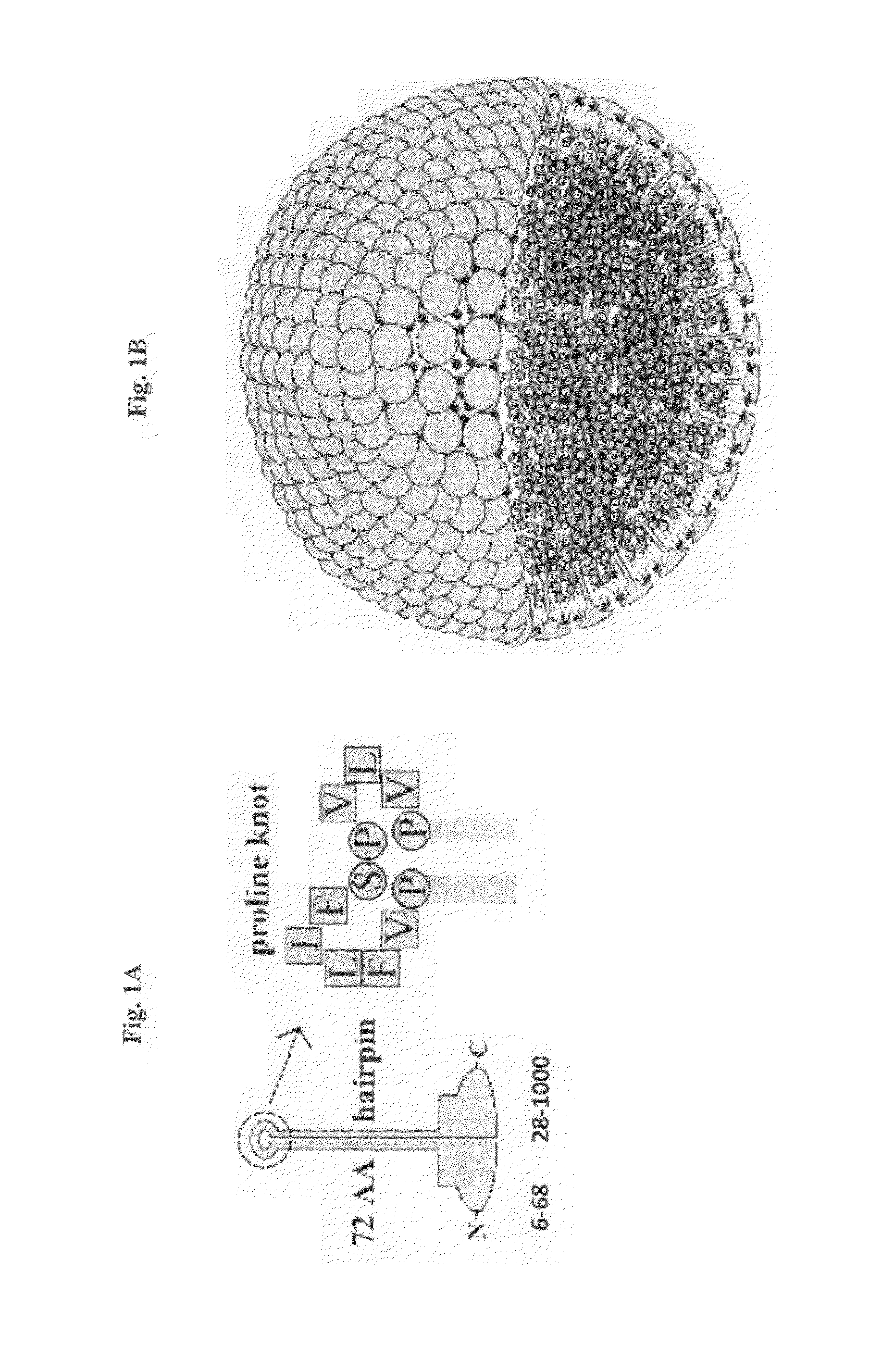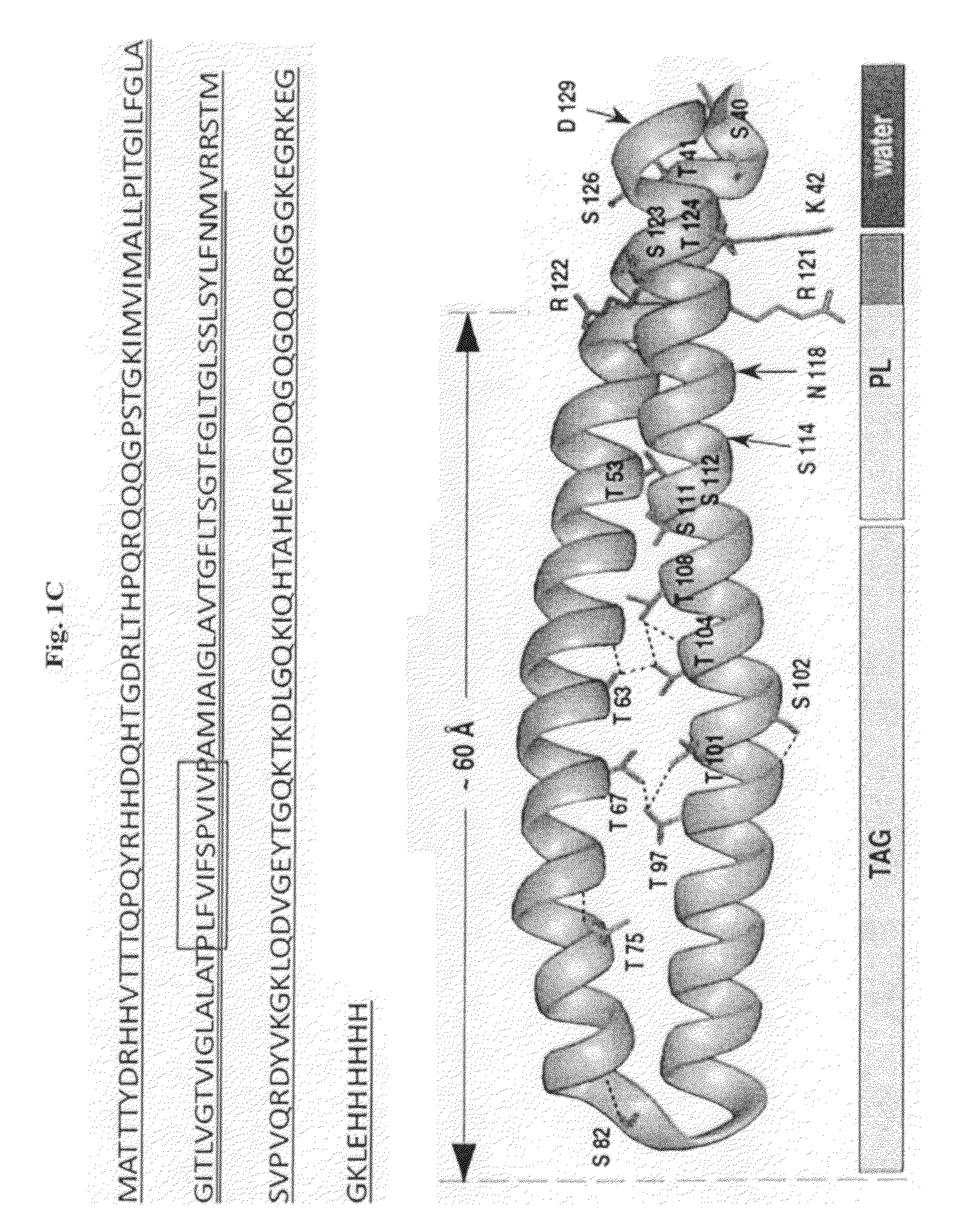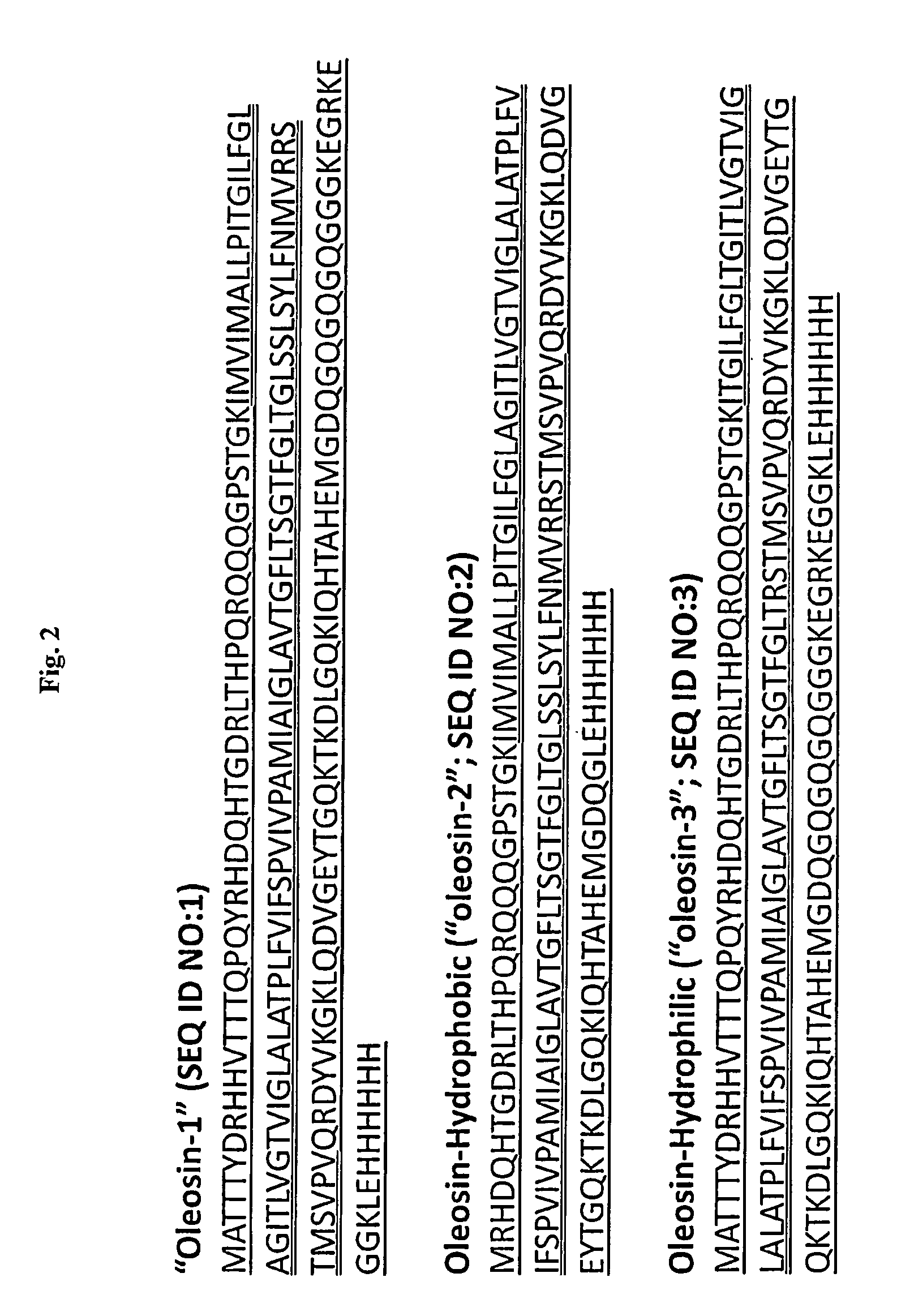Vesicles and nanostructures from recombinant proteins
a technology of vesicles and nanostructures, which is applied in the direction of peptide/protein ingredients, microcapsules, capsule delivery, etc., can solve the problems of inability to substantially improve the mechanical stability of phospholipid vesicles, inability to withstand the substantial shear stress in the circulation, and weak mechanical properties of phospholipid vesicles
- Summary
- Abstract
- Description
- Claims
- Application Information
AI Technical Summary
Benefits of technology
Problems solved by technology
Method used
Image
Examples
example 1
Production of Recombinant Oleosins
[0213]Two oleosin-like proteins were created with different hydrophobic block fractions (FIG. 2) of sunflower seed oleosin—“oleosin-hydrophobic”, SEQ ID NO:2; “oleosin-hydrophilic”, SEQ ID NO:3. Hydrophobic block fractions were calculated by taking the ratio of amino acids in the central hydrophobic domain to the total number of amino acids in the sequence. The genes for the oleosin-like proteins were created by removing specific codons from sunflower seed oleosin gene through PCR. Oleosin-hydrophobic is an oleosin-like protein, which was made by removing amino acids from both the N- and C-terminus until the hydrophobic block fraction of the protein was about 50%. Oleosin-hydrophilic is an oleosin-like protein, which was made by removing amino acids from the central hydrophobic domain until the protein was about 67% hydrophilic. In all cases, the proline knot and 6-Histidine was conserved.
[0214]All variations of oleosin were expressed in inclusion b...
example 2
Protein Assembly into Vesicles
[0215]The oleosin-like proteins, oleosin-hydrophilic and oleosin-hydrophobic, were found to form bilayer vesicles in water. A non-limiting general schematic representation of how these molecules may assemble into bilayers is illustrated in FIG. 4. Without wishing to be limited by theory, it is contemplated that, because of the proline rich turn segment, single oleosin chains may not span the entire bilayer.
[0216]To make vesicles, lyophilized protein is suspended in a high vapor pressure solvent (dichloromethane and chloroform) to ensure complete drying. After drying, the protein is hydrated with deionized water and sonicated at elevated temperature to create bilayer vesicles. Dynamic light scattering (DLS) shows that the average vesicles size of oleosin-hydrophobic vesicles to be 370 nm with peaks at 140 nm and 380 nm (FIG. 5). Cryo-transmission electron microscopy (Cryo-TEM) may be used to determine the structure of the nanosized particles.
[0217]Vesic...
example 3
Preparation and Characterization of Vesicles with Recombinant Oleosin
[0218]Cryo-TEM may be used to evaluate effects of truncations or alterations of the oleosin structure in the protein's ability to assemble into membranes. Substitution or permutation of blocks of oleosin is also performed to generate novel proteins, and then the chemistry-structure relationship of these molecules is analyzed.
[0219]Oleosin is a hairpin molecule with two hydrophilic arms. Oleosin-like proteins are prepared using the following strategy: (a) perform serial truncations of either the N-terminal or C-terminal hydrophilic blocks and test the resulting protein for vesicle formation; (b) replace the hydrophobic chains and evaluate the importance of hydrophobic sequence on membrane formation and folding; and (c) replace the proline knot and investigate if membrane formation is adversely affected.
[0220]Serial truncations of each hydrophilic arm are performed to determine their importance in vesicle formation. ...
PUM
| Property | Measurement | Unit |
|---|---|---|
| molecular weights | aaaaa | aaaaa |
| molecular weights | aaaaa | aaaaa |
| particle size | aaaaa | aaaaa |
Abstract
Description
Claims
Application Information
 Login to View More
Login to View More - R&D
- Intellectual Property
- Life Sciences
- Materials
- Tech Scout
- Unparalleled Data Quality
- Higher Quality Content
- 60% Fewer Hallucinations
Browse by: Latest US Patents, China's latest patents, Technical Efficacy Thesaurus, Application Domain, Technology Topic, Popular Technical Reports.
© 2025 PatSnap. All rights reserved.Legal|Privacy policy|Modern Slavery Act Transparency Statement|Sitemap|About US| Contact US: help@patsnap.com



